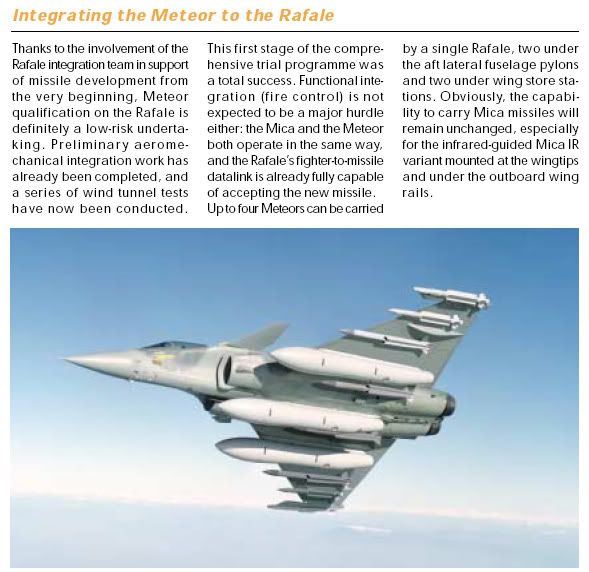22/10/2008
Exclusif: sérieux coup de frein sur les commandes de Rafale
http://secretdefense.blogs.liberation.f ... rieux.html
Le ministère de la Défense pourrait ne commander que cinquante avions de combat Rafale, au cours des six prochaines années. Selon nos informations, la loi de programmation militaire (2009-14), qui a été approuvée le 10 octobre lors d'un Conseil de défense à l'Elysée - et qui sera à l'ordre du jour du Conseil des ministres du mercredi 29 octobre, prévoit l'acquisition d'environ cinquante Rafale, soit un peu plus de huit par an. Il s'agit toutefois d'un chiffre plancher, car la loi de programmation laisse la porte ouverte à des commandes plus importantes, jusqu'à soixante-six avions, soit onze par an. Le rythme actuel de livraison est d'une quinzaine par an.
L'ajustement se fera, sans doute en 2010, en fonction des succès de l'appareil à l'exportation. Deux contrats sont en cours de discussion, l'un avec les Emirats arabes unis (60), l'autre avec la Libye (14). Si ces contrats sont signés, la commande de l'Etat français sera plus faible - pouvant descendre donc jusqu'à 50. En revanche, si le Rafale enregistre de nouveaux échecs à l'export [ce qui est aujourd'hui peu probable], l'Etat français augmentera ses commandes afin de maintenir les cadences de production. Celles-ci baisseront, quoi qu'il advienne, passant de 14 avions construits par an actuellement à 11 au maximum.
La baisse prévue du rythme de livraison de cet avion de combat provoque de sérieuses tensions entre l'Armée de l'air et la Marine nationale, qui en sont, toutes les deux, équipées. La Marine fait valoir que ses Super-Etendard arriveront en fin de vie en 2015, et qu'il faudra alors une quarantaine de Rafale Marine, afin de pouvoir armer un Groupe aérien embarqué de trente avions. Dans le même temps, l'Armée de l'air transforme ses escadrons sur Rafale. Si les appareils ne sont livrés qu'au compte-gouttes, il faut plusieurs années pour mettre sur pied un escadron opérationnel de 20 appareils.
Pour en débattre, le forum de Secret Défense sur liberation.fr
http://www.google.com.br/language_tools?hl=pt-BR
O Ministério da Defesa não poderia ordenar que cinquenta avião de combate Rafale durante os próximos seis anos. Segundo as nossas informações, a lei do planeamento militar (2009-14), que foi aprovada em 10 de outubro, a uma defesa no Conselho Elysee - e vai estar na agenda do Conselho de Ministros quarta-feira, 29 Outubro, prevê a aquisição de aproximadamente cinqüenta Gust, um pouco mais de oito por ano. No entanto, é uma palavra figura, de programação, porque a lei deixa aberta a porta para encomendas maiores, até sessenta e seis aviões, onze por ano. O actual ritmo de entrega é um meio ano.
O ajuste será feito, provavelmente em 2010, dependendo do sucesso das aeronaves para exportação. Estão em discussão dois contratos, um com os Emirados Árabes Unidos (60), o outro com a Líbia (14). Se esses contratos sejam assinados, o comando do Estado francês vai ser menor -, por isso, pode chegar até 50. Se as falhas Rafale novo recorde de exportação [o que é improvável agora], o Estado francês irá aumentar as suas ordens para manter o ritmo de produção. Essa queda, não importa qual, a partir de 14 aviões construídos por ano atualmente para 11 no máximo.
A diminuição do ritmo de entrega do lutador causando graves tensões entre a Força Aérea e da Armada, que são, ambos equipados. A Marinha alega que o seu Super-Etendard final de vida em 2015, e vai então quarentena Rafale Marine, a fim de armar um grupo de trinta ar bordo das aeronaves. Ao mesmo tempo, esquadrões da Força Aérea em transformar o seu Rafale. Caso os dispositivos sejam entregues apenas um fio de água, que demora vários anos para criar um esquadrão operacional de 20 aeronaves.
Para discutir o fórum Secret Defense liberation.fr









